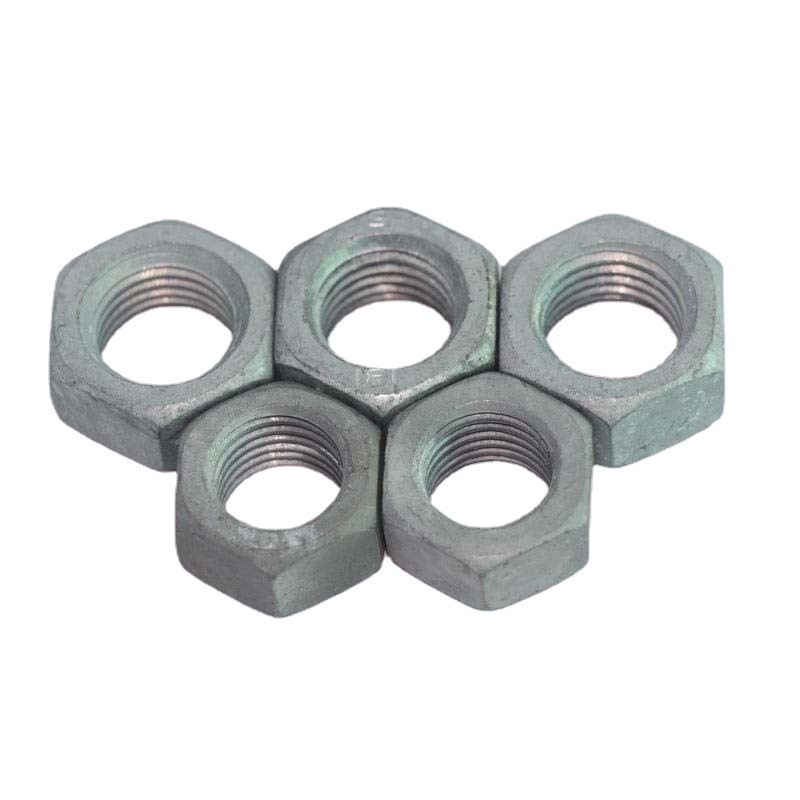

Understanding A36 Anchor Bolt Applications and Specifications in Construction Projects
Aug . 15, 2024 08:35 Back to list
Understanding A36 Anchor Bolt Applications and Specifications in Construction Projects
Understanding A36 Anchor Bolts Applications, Benefits, and Specifications
Anchor bolts are critical components in the construction and engineering sectors, essential for joining structural elements to concrete foundations. Among the various materials used in the production of anchor bolts, A36 steel stands out for its balance of strength, ductility, and cost-effectiveness. This article delves into the characteristics and applications of A36 anchor bolts, highlighting their significance in construction projects.
What is A36 Steel?
A36 steel is a type of carbon structural steel that is widely recognized for its versatility and good weldability. The designation 'A36' comes from the ASTM (American Society for Testing and Materials) standard specification that outlines the material’s mechanical properties and chemical composition. Specifically, A36 steel typically has a minimum yield strength of 36,000 psi and a tensile strength between 58,000 to 80,000 psi. This makes it suitable for various structural applications, including anchor bolts.
Characteristics of A36 Anchor Bolts
1. Strength and Durability A36 steel’s high yield and tensile strength contribute to its durability, making anchor bolts made from this material capable of withstanding heavy loads and extreme conditions. This strength is essential in applications where the integrity of the structure is paramount.
2. Versatility A36 anchor bolts can be used in a wide range of environments, whether in marine, industrial, or residential settings. Their reliability in various conditions has made them a popular choice among engineers and contractors.
3. Cost-Effectiveness Compared to other high-strength steels, A36 offers a more economical solution without compromising structural integrity. This cost efficiency makes it ideal for large projects that require numerous anchor bolts.
4. Weldability and Machinability A36 steel is easily weldable, allowing fabricators to create custom shapes and sizes for anchor bolts as required by specific projects. Additionally, its machinability affords flexibility in the manufacturing process.
anchor bolt a36

Applications of A36 Anchor Bolts
A36 anchor bolts are widely used in numerous applications, including but not limited to
- Building Foundations In commercial and residential construction, anchor bolts secure structural frames to concrete foundations, ensuring stability and resilience against environmental forces like wind and earthquakes.
- Bridges Anchor bolts play a pivotal role in bridge engineering, where they help to connect bridge girders, posts, and other structural elements, contributing to the overall load-bearing capacity and durability of the bridge.
- Industrial Equipment In industrial settings, A36 anchor bolts secure heavy machinery and equipment to their bases, preventing movement or tipping that could result in operational hazards.
- Towers and Poles Telecommunications and electrical poles often utilize A36 anchor bolts to maintain their stability and resist external forces, ensuring the safety and functionality of services.
Conclusion
A36 anchor bolts are indispensable in modern construction and engineering. Their combination of strength, cost-effectiveness, and versatility makes them an ideal choice for a wide array of applications. Understanding the properties and uses of A36 steel can help architects, engineers, and builders make informed decisions when selecting materials for their projects. As technology and construction methods continue to evolve, A36 anchor bolts will remain a reliable option in creating robust and safe structures.
Latest news
-
Hot Dip Galvanized Bolts-About LongZe|High Strength, Corrosion Resistance
NewsJul.30,2025
-
High-Strength Hot Dip Galvanized Bolts - Hebei Longze | Corrosion Resistance, Customization
NewsJul.30,2025
-
Hot Dip Galvanized Bolts-Hebei Longze|Corrosion Resistance&High Strength
NewsJul.30,2025
-
High-Strength Hot-Dip Galvanized Bolts-Hebei Longze|Corrosion Resistance&High Strength
NewsJul.30,2025
-
Hot Dip Galvanized Bolts-Hebei Longze|Corrosion Resistance&High Strength
NewsJul.30,2025
-
Hot Dip Galvanized Bolts - Hebei Longze | Corrosion Resistance, High Strength
NewsJul.30,2025

